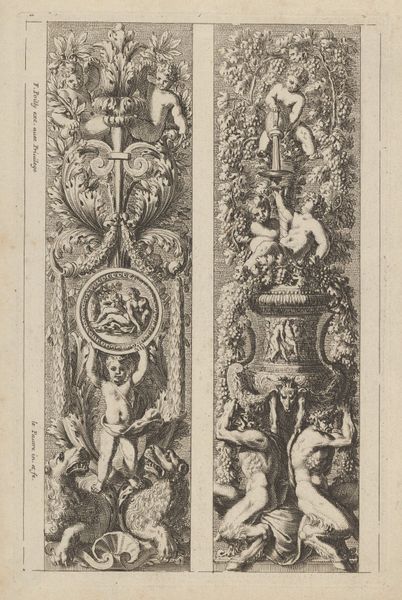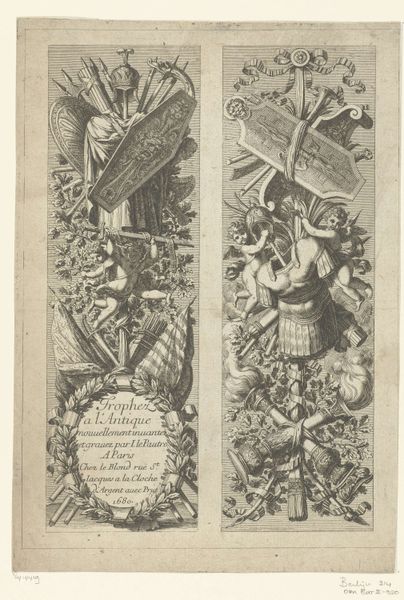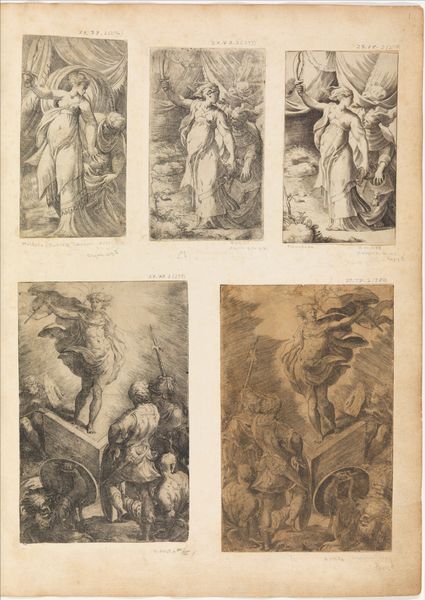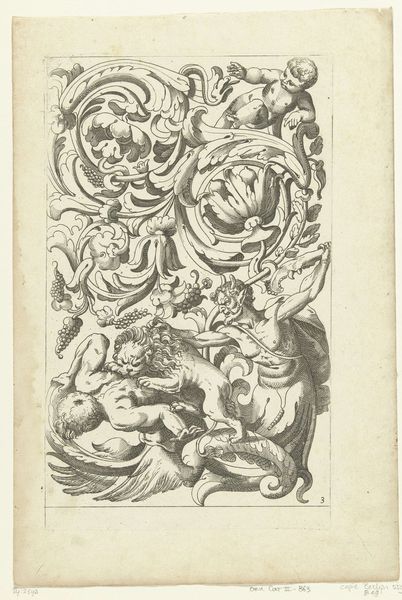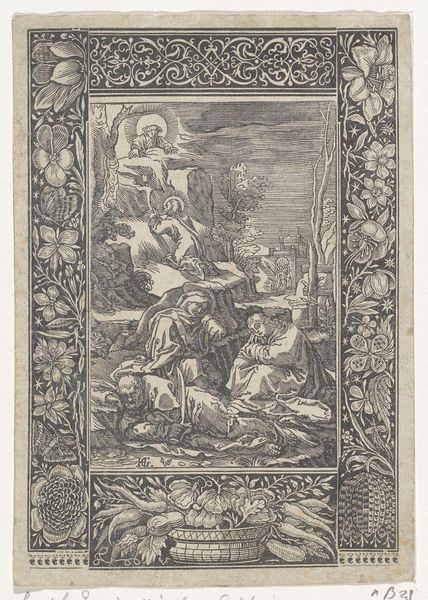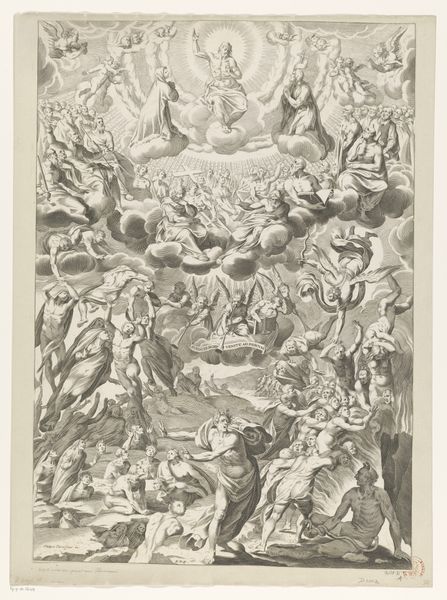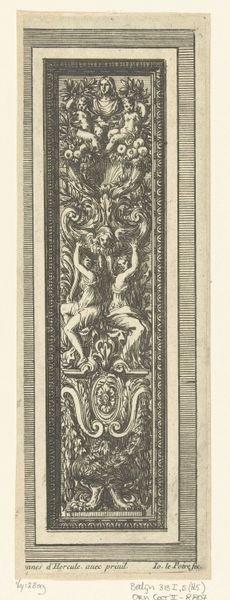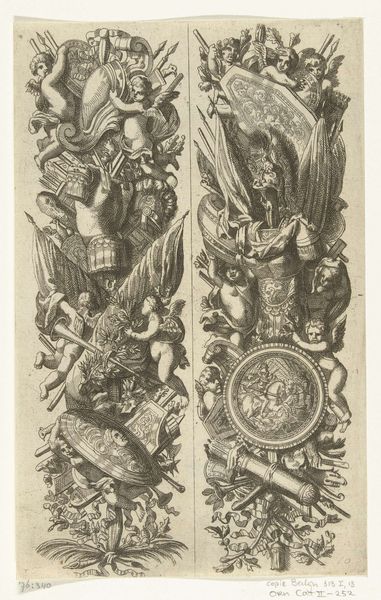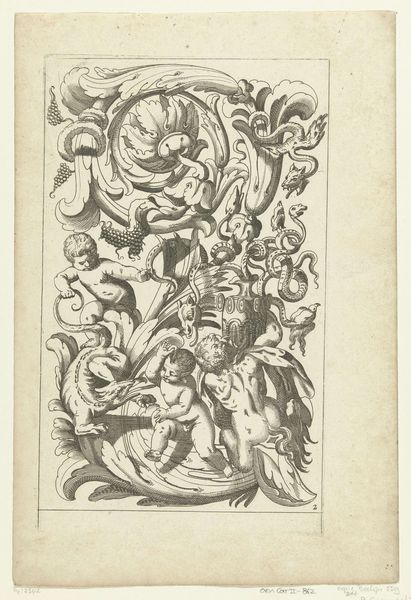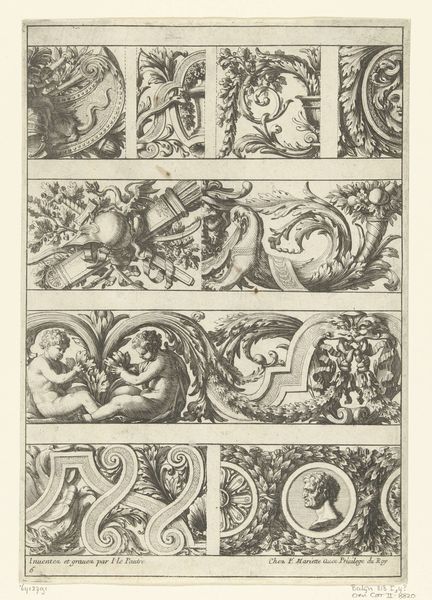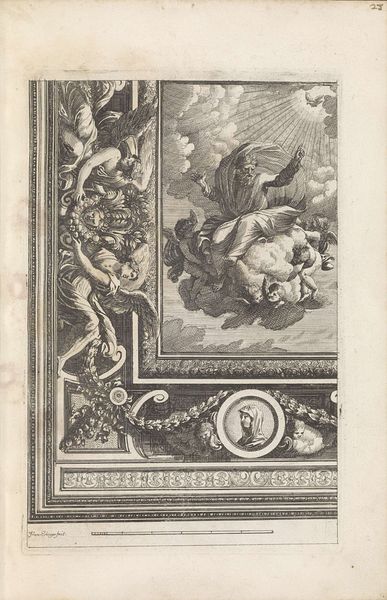
drawing, engraving
#
drawing
#
allegory
#
baroque
#
pen drawing
#
figuration
#
form
#
line
#
history-painting
#
engraving
Dimensions: height 324 mm, width 225 mm
Copyright: Rijks Museum: Open Domain
Editor: This is Jean Lepautre’s “Twee wapentrofeeën à l'antique”, from 1680. It’s an engraving currently housed at the Rijksmuseum. I'm immediately struck by the density of the lines, all those flourishes—it almost feels overwhelming. What do you see in this piece? Curator: I see the weight of labor embedded in the production of this print. The sheer number of lines etched onto the plate, the physical act of creating this dense, interwoven pattern—it speaks to the effort required in Baroque printmaking. It highlights how seemingly decorative arts also rely on intense manual processes. How does the context of 17th-century print production shape your reading of this imagery? Editor: I hadn't considered the labour aspect so directly, more the ornamental function of prints like this. Was this sort of imagery meant to celebrate artisanal skill or was the artistry secondary to the glorification of power? Curator: The imagery and its material execution were intertwined. The celebration of military triumphs, allegorical figures, all presented through this painstaking process speaks to a complex interplay between power and its material representation. The act of reproducing this image also factors into a broader discussion about access, viewership, and ultimately the dissemination of visual ideas that reinforced specific social structures of that time. Think of this piece as a form of propaganda, reliant on and reflective of the social means of production. Editor: So, even something that appears purely decorative served a purpose in reinforcing power structures, not just through the symbolism, but through the sheer amount of work put into it and disseminated widely? Curator: Precisely. It pushes us to consider what kind of consumption these engravings facilitated: Did prints such as these help cultivate a sense of national pride? What impact did the production, distribution and ownership of such items have on the broader social hierarchies? Editor: That's fascinating. I'll definitely look at Baroque prints with different eyes from now on. Thanks for helping me connect the process and materials to its cultural context. Curator: My pleasure. Seeing art through a materialist lens helps us unveil some complex sociopolitical conditions, reminding us how much artworks, like any artifact, are shaped by, and themselves shape society.
Comments
No comments
Be the first to comment and join the conversation on the ultimate creative platform.
